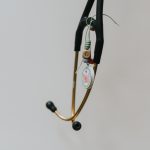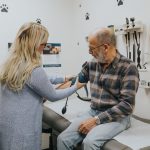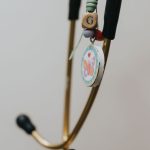Share
IPAC & MDR – two of the most important acronyms in patient safety are spelled out
We sit down with our IPAC manager to learn about sterility assurance, find out where health care practitioners can get training and hear examples of IPAC gone wrong
People go to a medical clinic, a hospital or a diagnostic facility when they are ill, managing a treatment plan or maintaining their health.
So how do we keep people safe, especially more vulnerable people, when they visit the places where infection congregates?
The answer, Infection Prevention & Control (IPAC), is simple in theory, but can be complex in practice. One of the challenges in the health care community is accessing formal training opportunities that standardize IPAC and Medical Device Reprocessing (MDR) in Alberta. CPSA has been working hard to address this very challenge.
We talk with Ben Kung, CPSA’s Infection Prevention & Control Manager, to discuss our role in setting standards and promoting education for IPAC and MDR in community clinics.
CPSA: Why are IPAC and MDR so critical in health care environments?
Ben: IPAC and MDR are essentially two things you need to nail down if your clinic is committed to patient safety. Without the proper protocol, training and record-keeping, you put people at risk. At least one person in every clinic should have IPAC & MDR as a job responsibility and be properly trained in it.
CPSA’s IPAC and MDR standards are the bare minimum expectation of every clinic we assess. Whenever practical, we hold clinics to the same standard that a hospital is held to.
Albertans also have high expectations and a lot of trust that their medical clinics are meeting the IPAC and MDR standards. Physicians who work at medical clinics need to make sure they are doing everything they can to keep that trust alive.
CPSA: What facilities is CPSA responsible for assessing?
Ben: We assess all independently operated clinics where CPSA members practice; approximately 1,000 across Alberta. Each clinic or facility is organized into tiers depending on risk.
CPSA: What are some of the worst examples of poor IPAC or MDR you’ve seen?
Ben: Sterility assurance consists of cleaning plus physical, chemical and biological monitoring. That’s the formula. When a clinic makes an error, it is usually because they don’t do all four things, or they do all four but perform one or more improperly.
It’s rarely intentional, but the error is important to correct. One of the worst examples was a clinic using sterilizing equipment that didn’t meet Health Canada requirements. We stopped MDR at that clinic immediately and conducted an investigation to make sure there was no risk to patients.
CPSA: What happens when you do encounter a clinic not following protocol that may be putting patients at risk?
Ben: Most errors can be addressed with education and support. We then follow up at a later date to make sure the clinic is following protocol. However, when there are too many errors or there is a particularly serious one, we find out whether or not there is a public health risk. If there is, we take it to Alberta Health Services’ Medical Officer of Health (MOH). They’ll conduct an independent risk assessment to determine the next steps. That often includes reviewing our assessment findings.
If the MOH investigates and their risk findings exceed a threshold, they may initiate a plan to contact past patients of the clinic. We call that a look-back. In the six years I’ve been in my role at CPSA, we have supported the MOH with five look-backs. For us, even one is too many, which is why we work so hard to educate clinics.
CPSA: Most errors seem to happen as a result of lack of knowledge and training. What are the challenges with MDR & IPAC training in Alberta?
Ben: Performing MDR improperly or failing to follow IPAC principles is rarely something done intentionally. It’s almost always a lack of knowledge, training or capacity.
Clinics often have fewer resources, less fancy equipment and less money than larger facilities. It can also be difficult to stay on top of training and training maintenance because of staff turnover.
In a large facility or a hospital, there are people who are responsible for IPAC and MDR full-time. In a clinic, IPAC and MDR are just two of many things staff are responsible for.
IPAC and MDR also aren’t formally part of any physician, nurse or medical office assistant training program as far as we know. This is something we hope to see change in the future and we’re doing our best to influence that.
CPSA: So how can healthcare professionals access training?
Ben: First, I think it is critical that at least one person in every clinic takes on IPAC and MDR as a formal responsibility. Once that has been determined, the second thing healthcare professionals should do is seek out formal training and review our standards.
Several courses are available online and we link to our preferred courses on the MDR and IPAC pages of our website.
If one person in a clinic has been assigned this responsibility, that shouldn’t dissuade other clinic staff from also taking the training. The more people who understand IPAC and MDR in clinics and in health care, the better. If you’re a medical office assistant or nurse, I think having this type of training is definitely a plus for employment.
We also have a 30-minute module on our website to help physicians understand what’s expected of them under provincial OHS legislation.
Some reputable medical supply distributors also offer training when they supply a clinic, but the onus is on the clinic and physicians to make sure the clinic is actually following protocol.
CPSA: One of the things you mentioned is turnover. How can community clinics ensure they’re doing the right things with their IPAC and MDR protocol if staff leaving is an issue?
Ben: The best way is to have policies and procedures easily available, train new staff as they come in, and cross-reference your actual work against the CPSA IPAC and MDR standards regularly. It might take some extra time, but it’s worth it to do it right. Most of the clinic staff we talk to get a lot of satisfaction from improving their processes and this is probably the best way to do it.
Clinics can also request a proactive assessment, where a CPSA assessor comes by to see how the clinic is operating. Assessors can give the clinic some advice to improve their processes. At the end of a successful assessment, we’ll send the clinic a certificate of participation.
CPSA: Who can community health care professionals contact if they want to learn more?
Ben: I would suggest bookmarking CPSA’s MDR and IPAC webpages for a quick reference. Clinics can also contact us anytime with questions at ipac@cpsa.ab.ca




















Comments for this post are now closed. If you would like to share your feedback on this topic, please email support@cpsa.ca.